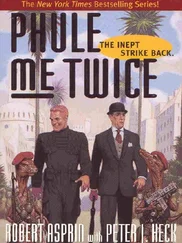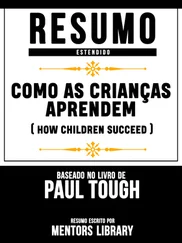When you visit the school today, what impresses you first is its campus, the largest of any school in the city, twenty-seven rolling acres adorned with stone buildings and carefully tended lacrosse fields. There are no uniforms, technically, but the middle- and high-school students share a studiously casual wardrobe of Abercrombie and Fitch jackets and North Face backpacks. (One wet late-winter day when I visited a tenth-grade English class, every girl but one was wearing identical $125 knee-high Hunter rain boots.) John F. Kennedy and Robert F. Kennedy went to Riverdale briefly as boys, and today’s student body draws heavily from the Upper East Side and the tonier precincts of Westchester County; it is the kind of place members of the establishment send their kids so they can learn to be members of the establishment. Tuition starts at $38,500 a year, and that’s for prekindergarten.
When you first meet him, Dominic Randolph, Riverdale’s headmaster, seems like an unusual choice to lead an institution so steeped in status and tradition. He comes across as an iconoclast, a disrupter, even a bit of an eccentric. He dresses for work every day in a black suit with a narrow tie, and the outfit, plus his cool demeanor and flowing, graying hair, makes you wonder if he might have played sax in a ska band in the 1980s. (The English accent helps.) Randolph is a big thinker, always chasing new ideas, and a conversation with him can feel like a one-man TED conference; it is dotted with references to the latest work by behavioral psychologists and management gurus and design theorists. When he became headmaster, in 2007, he swapped offices with his secretary: she got the reclusive inner sanctum where previous headmasters had sat, and he remodeled the small outer reception area into his own open-concept workspace, its walls lined with whiteboards on which he sketches ideas and slogans. One day when I visited, one wall was bare except for a lone sheet of white paper. On it was printed a single black question mark.
For the headmaster of an intensely competitive school, Randolph, who is in his early fifties, is surprisingly skeptical about many of the basic elements of a contemporary high-stakes American education. He did away with Advanced Placement classes soon after he arrived at Riverdale; he encourages his teachers to limit the homework they assign; and he says that the standardized tests that Riverdale and other private schools require for admission to kindergarten and middle school are “a patently unfair system” because they evaluate students almost entirely by IQ. “This push on tests,” he told me when I visited his office one fall day, “is missing out on some serious parts of what it means to be a successful human.”
The most critical missing piece, Randolph explained, is character. “Whether it’s the pioneer in the Conestoga wagon or someone coming here in the 1920s from southern Italy, there was always this idea in America that if you worked hard and you showed real grit, that you could be successful,” he said. “Strangely, we’ve now forgotten that. People who have an easy time of things, who get eight hundreds on their SATs, I worry that those people get feedback that everything they’re doing is great. And I think as a result, we are actually setting them up for long-term failure. When that person suddenly has to face up to a difficult moment, then I think they’re screwed, to be honest. I don’t think they’ve grown the capacities to be able to handle that.”
Like Levin, Randolph has pondered throughout his career as an educator the question of whether and how schools should impart good character. It has often felt like a lonely quest. At the British boarding school Randolph attended as a boy, educators took it for granted that they were teaching character as much as they were teaching math or history. When Randolph moved to the United States, though, he found that American educators were more reluctant to talk about character than their British counterparts. For many years, he followed the national discourse on character, or what passed for it, but it always seemed to him out of step with the needs of a school. In the 1980s, William Bennett made the case for teaching virtue, but that effort quickly became too political for Randolph’s taste, co-opted, he says, by neoconservatives. He was intrigued by Daniel Goleman’s writing on emotional intelligence in the 1990s, but it seemed too mushy, too touchy-feely, to serve as the basis for a practical system of instruction. “I was looking for something that was going to be serious, that wasn’t going to be a fad, that would let you actually shift a school’s culture,” he told me.
In the winter of 2005, Randolph read Learned Optimism, and he became intrigued by the field of positive psychology. He began to read up on the work of not only Seligman but also two of Seligman’s frequent collaborators: Christopher Peterson of the University of Michigan and Angela Duckworth, one of Seligman’s star protégées at Penn. At the time, Randolph was the assistant head of the Lawrenceville School, a private boarding and day school near Princeton, New Jersey, and he arranged a meeting with Seligman in Philadelphia. As it happened, on the morning that Randolph made the forty-mile drive, Seligman had scheduled a separate meeting with David Levin. When the two educators arrived in his office at about the same time, Seligman decided, impulsively, to combine the two meetings, and he invited the psychologist Peterson, who was also visiting Penn that day, to join him and Randolph and Levin in his office for a freewheeling discussion of psychology and schooling. It turned out to be the beginning of a long and fruitful collaboration.
Levin and Randolph each came to Philadelphia expecting to talk about optimism. But Seligman surprised them by pulling out a new and very different book, which he and Peterson had just finished: Character Strengths and Virtues: A Handbook and Classification. The bestselling books that Seligman had published previously were relatively thin works of popularly accessible psychology with subtitles designed to catch the eye in an airport bookstore (“How to Change Your Mind and Your Life”!), but Character Strengths and Virtues was an eight-hundred-page scholarly tome that weighed in at three and a half pounds and retailed for eighty dollars. It was intended, according to the authors, to be a “manual of the sanities,” a mirror image of the Diagnostic and Statistical Manual of Mental Disorders, or the DSM, the authoritative taxonomy of psychiatric maladies that sat on the bookshelf of every therapist and psychiatrist. Character Strengths and Virtues was an attempt to inaugurate a “science of good character.” It was, in other words, exactly what Randolph and Levin had each been looking for, even if neither of them had quite known it.
Character is one of those words that complicate any conversation, mostly because it can mean very different things to different people. It is often used to represent adherence to a particular set of values, which means that its definition will necessarily change over time. In Victorian England, a person of good character was one who displayed values like chastity, thrift, cleanliness, piety, and social propriety. On the American frontier, good character had more to do with courage, self-sufficiency, ingenuity, industriousness, and grit. But Seligman and Peterson aspired in their book to transcend those vagaries of history, to identify qualities that were valued not just in contemporary North American culture but in every society and in every era. They consulted works from Aristotle to Confucius, from the Upanishads to the Torah, from the Boy Scouts Handbook to profiles of Pokémon creatures, and they eventually settled on a list of twenty-four character strengths they believed to be universally respected. The list includes some qualities we think of as traditional noble traits, like bravery, citizenship, fairness, wisdom, and integrity; others that veer into the emotional realm, like love, humor, zest, and appreciation of beauty; and still others that are more concerned with day-to-day human interactions, like social intelligence (the ability to recognize interpersonal dynamics and adapt quickly to different social situations), kindness, and gratitude.
Читать дальше



![Коринн МакКей - How to Succeed as a Freelance Translator [calibre 3.46.0]](/books/402693/korinn-makkej-how-to-succeed-as-a-freelance-transl-thumb.webp)








